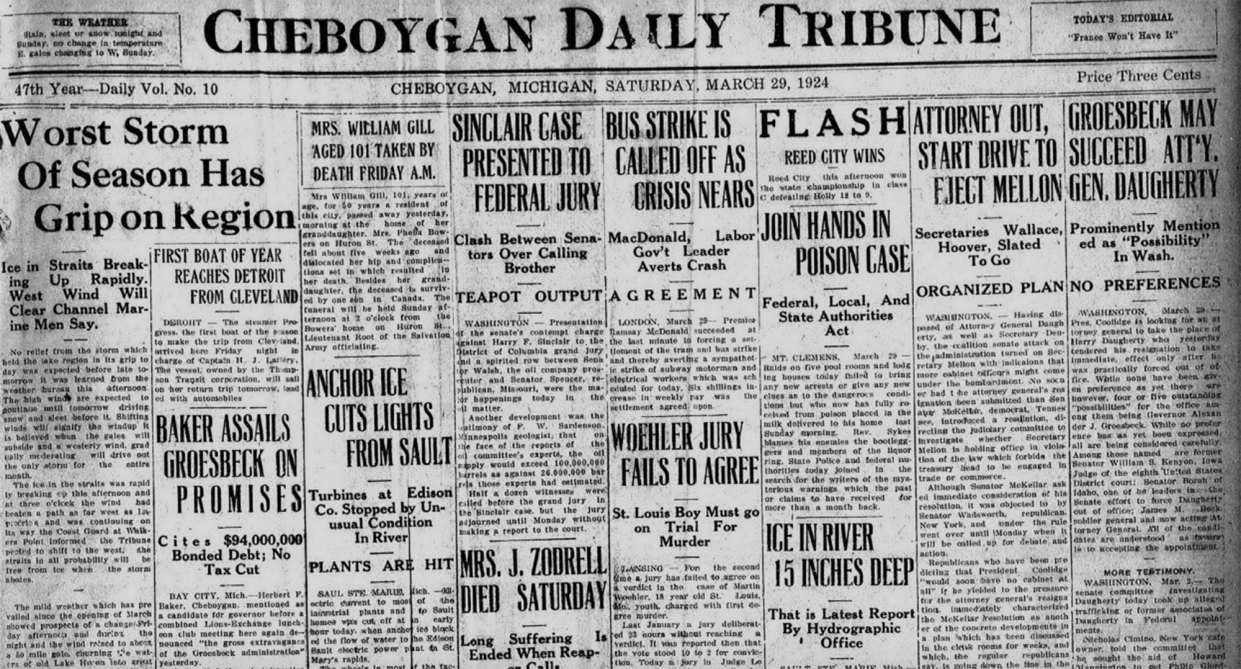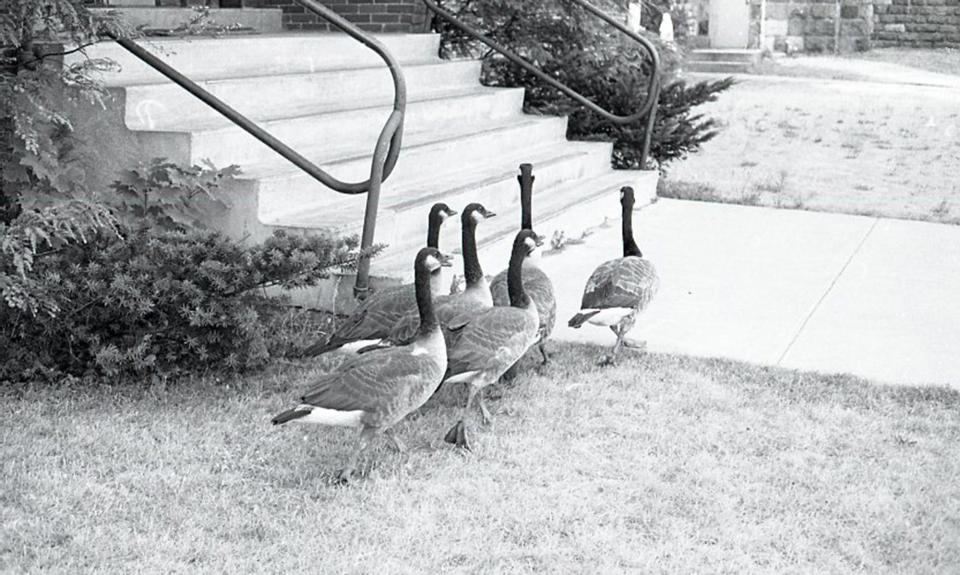Reviewing the news: March storms and Canada geese

March 29, 1924: Worst storm of season has grip on region
No relief from the storm which held the lake region in its grip today was expected before late tomorrow it was learned from the weather bureau this afternoon.
The high winds are expected to continue until tomorrow driving snow and sleet before it. Shifting winds will signify the windup it is believed when the gales will subside and a westerly wind, gradually moderating will drive out the only storm for the entire month.
The ice in the straits was rapidly breaking up this afternoon and at three o’clock the wind had beaten a path … and was continuing on its way the Coast Guard at Walkers Point informed the Tribune. The straits in all probability will be free from ice when the storm abates.
The mild weather which had prevailed since the opening of March allowed prospects of a change Friday afternoon and during the night and the wind raised to about a 50 mile gale churning the waters of old Lake Huron into great rollers. Past experience leads to the opinion that the ice at the eastern end of the straits at least will be broken up and the shifting of the wind to the west will clear them as the ice is light this year.
Today’s storm was the worst of the season. Everything not well secured went down in the fierce gale, and electric and telephone wires were put out of commission. Main Street south of Lincoln avenue was strewn with electric wires owing to one of the poles coming down in the storm and making it dangerous for vehicles and pedestrians. A portion of the Yackama club house went down but the damage was not great. About 10 o’clock this morning the men employed at the Embury-Martin Lumber Co. were laid off for the balance of the day as it was impossible to handle the lumber from the mill. Awnings along Main Street suffered to considerable extent from the storm.

March 29, 1974: Canada geese to be released in Dingman Marsh
Approximately sixteen birds will be released in the Dingman Marsh Wildlife flooding this spring, according to Jeff Greene, Habitat Biologist at Indian River. This effort to establish a breeding flock is part of a long term management plan for that area.
Mr. Charles Reid conducted a study on the Dingman Marsh last summer. He studied aquatic food plants, particularly duck weed and waterfowl use. A habitat improvement project was conducted this past winter. Two islands within the fooding were cleared of brush and three points of land were also cut off. This will improve nesting habitat for ducks and geese.
The Canada geese to be released were live-trapped from Kinsington Metro Park in the Detroit area. The birds were kept over winter at the Mason Game Farm and will be released in mated pairs as much as possible. These geese mate for life. When migrating Canadas reach their breeding grounds, family groups, consisting of previously established pairs and the last year’s young are still intact. Each pair will select around twenty acres for their home site. They feel at home nesting with ducks, night herons, great blue herons, and bitterns; all these species nest in the Dingman Marsh. Egg laying can start in March and continue into June in parts of the Arctic. The average clutch size is five eggs.
Biologist Greene is hoping for a successful nesting season this first year.
“If we have even half the pairs successfully raising goslings, perhaps we can establish a nesting area that will attract geese year after year,” Greene says.
This article originally appeared on The Petoskey News-Review: Reviewing the news: March storms and Canada geese

